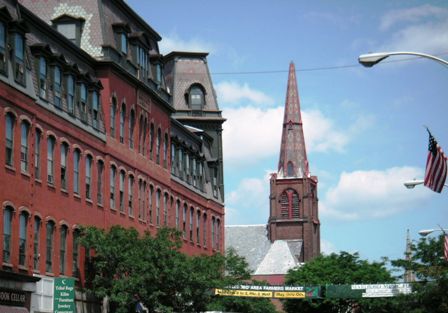|
 |

| POSC 2103 US Government (web v) |
|
public opinion (ch 6)
Read 20 questions a journalist should ask about poll results
Points to ponder:
- In evaluating surveys, both those that you can read in their original entirety and those that are reported in part in the press, you want to look for the following information:
- when the survey was completed, which may be over a range of days
- the population sampled
- the sample size
- the confidence level
- the margin of error, typically expressed as plus or minus # percentage points
- question wording
- question order (consider the different results that might be realized if one asks citizens to evaluate the President’s job performance before as opposed to after asking their assessment of the state of the economy)
- the organization carrying out the survey
- Figures never lie, but liars figure (that’s just for fun, but here are two technical concepts, with technical meanings of vital significance)
- The margin of error is used to figure a range, relative to a given confidence level, where the “true” value is; according to the Gallup poll from 16-18 June 2011, with a margin of error of +/- 3.0, 49% of US adults approve of President Obama's performance, which means that the percentage approving is, for a given confidence level, somewhere between 52% and 46% (you do the math: 49 +/- 3) and the corresponding estimate of 44% disapproval is for a true value somewhere between 41% and 47%; this means in a election poll with a 3-point margin of error where X is leading Y 51%-49%, the race is too close to call (indeed, the true value may be that 52% favor Y)
- A confidence level--typically but not always 95%--has to do with the chosen level of risk the surveyor chooses to take, the willingness to absorb sampling error; since surveys are based on taking a sample of the population, there is always a chance that the sample will not be representative of the population; whether a given sample is indeed representative is something that cannot be known, but one can estimate the probability of sampling error; in much scholarly research--but not in medical/pharmacological or (probably) engineering work which demand smaller risks of error (1 in a hundred or 1 in a thousand)--we are willing to accept a 5% chance that our sample is not representative, which means that five times out of a hundred the “true” value is outside the range specified by the margin of error (the problem is one never knows if this is one of those five times)
- Put the two pieces together, and assuming that the Gallup poll uses a 95% confidence level (the PollingReport site doesn’t include this detail, which is too often the case), one would say that there is a 95% chance that between 46% and 52% of US adults approve of the president’s performance (which implies, there is only a 5% chance that either less than 46% or more than 52% approve of the job he is doing)
- More on liars figure: Well-established polling institutions, commercial or academic, are likely to be trustworthy not so much because of ethical codes (see, for example, the code of the American Association of Public Opinion Research) but more due to the fact that their stock-in-trade is good, credible information, and so they run the risk of being driven out of business if they are found to have “cooked” the books; on the other hand, the burden is on the readers of poll results—both clients and the general public—to read surveys critically and to look for problems and limitations (AAPOR has a useful checklist)
- Coleman et al. give a rather Beaver Cleaver rundown of the poltiical socialization process, pretty much neglecting (save for a brief mention, p. 224) that the socialization process is less positive for those in the working class, especially members of the underclass who are ethnic minorities; for example, Jaros et al. have results in 1968 that showed Appalachian students were often only half as positively oriented toward government as were those from the Chicago area
- The political socialization effects of peer groups probably have less to do with the content of political views than political skills and orientations towards power and conflict: think of how kids in a group develop their leadership skills in deciding what games to play, how they develop their interpersonal skills in managing relations with networks of friends, and think also of the political process and political issue material involved in formal and informal groups in high school and college
- There are many reports that suggest that college has a liberalizing effect on young people, but probably not because of the ideology of the faculty (who range from social scientists who are typically on the left to engineering and agriculture professors who tend right); instead, being away from parents and, more important, being exposed to a more diverse college student body, as compared to more typically homogeneous high schools, has the effect of exposing young people to a wider range of experiences and perspectives, making them more open-minded
- Another name for "generational effects" (227) is "cohort effects"
Questions to consider:
- What is the "miracle of aggregation?"
- What would the salience of public opinion have to do with MCs adopting a trustree rather than a delegate role?
- Consider the discussion of ideology (p 219 ff) in light of your experience with Political Compass.
- Note what Coleman et al. say (237) about opinion leaders and recall the notion of a two-step flow of communication. Put them together, and?
- Why did President Bush travel all over the country trying to promote social security reform?
- What does the trend in support for the Iraq war say about public opinion in the US?
|
|
 |
|
|

